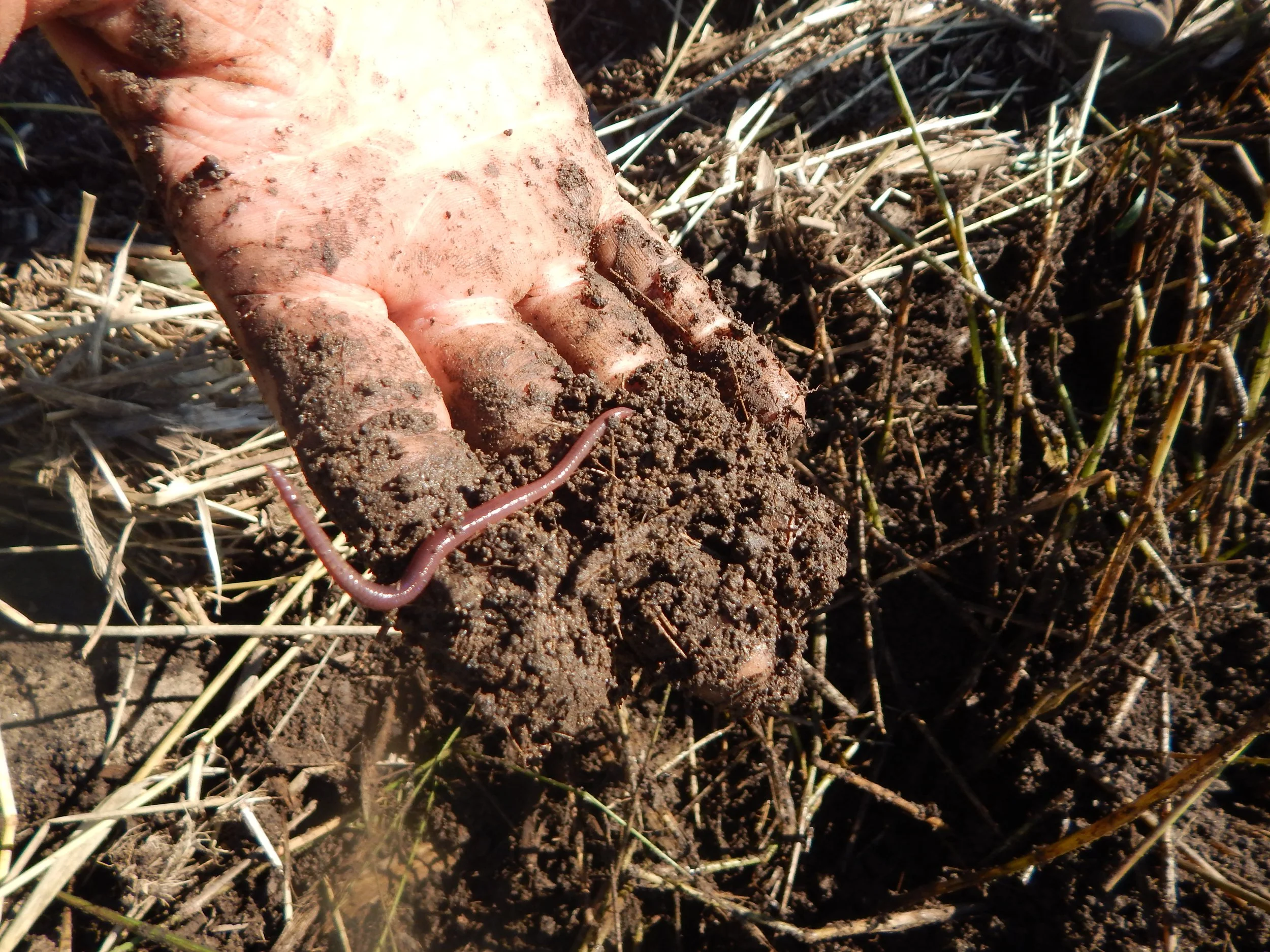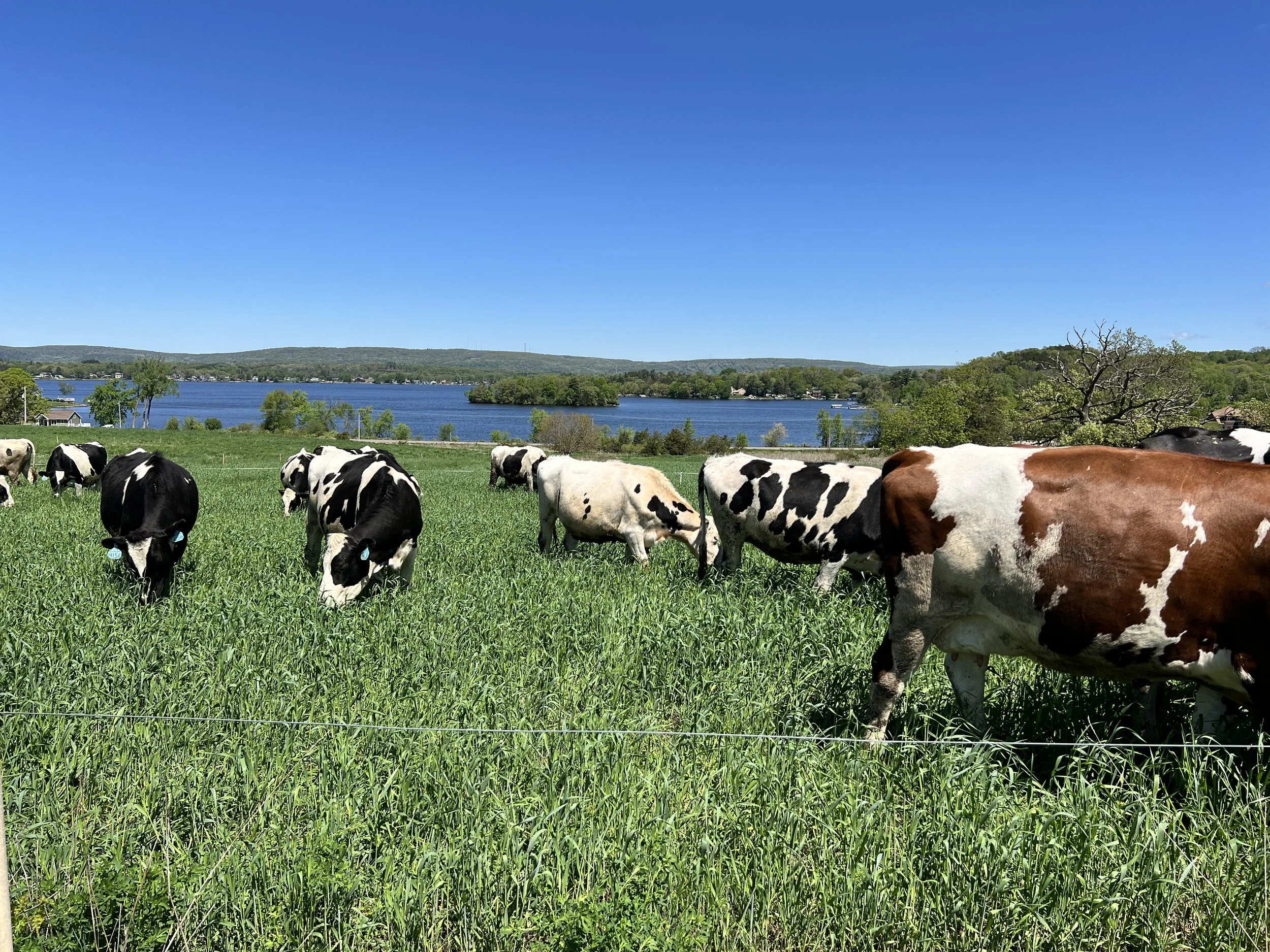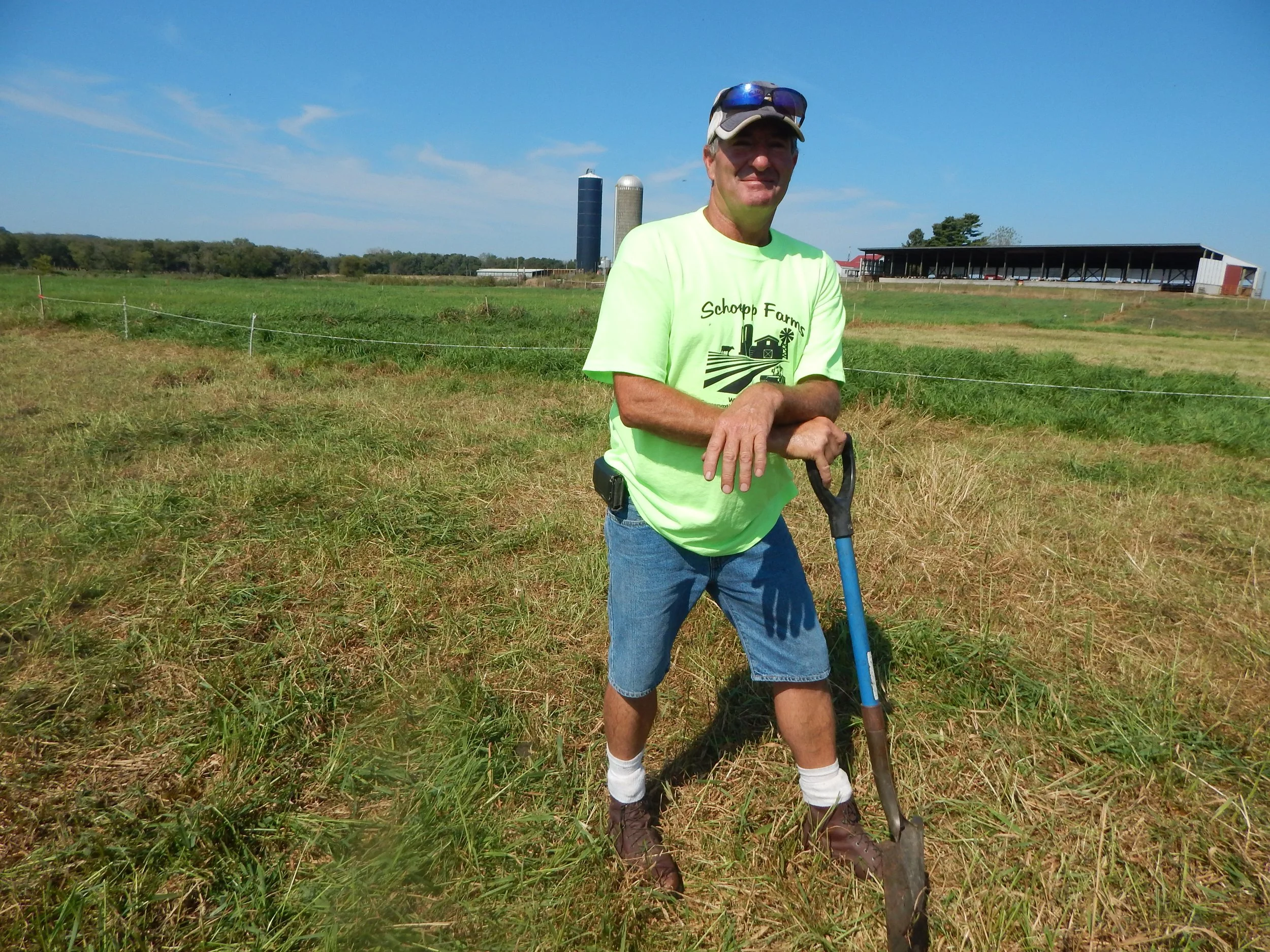Third-Generation Farm Protects Soil and Water Near Lake Wisconsin
A beautiful view from Schoepp Farms. Credit: Schoepp Farms
Located in Lodi, Wisconsin, Schoepp Farms LLC has what co-owner Ron Schoepp has heard called a “million-dollar view” of Lake Wisconsin. Part of the Upper Mississippi River Basin, the 7,187-acre reservoir provides a scenic backdrop for restaurants and residences, as well as opportunities for outdoor recreation like boating, fishing, and water skiing.
From Schoepp’s perspective, that’s a lot to protect. He suspects this proximity to the lake—and everything it has to offer—is why the Schoepp family has such a vested interest in protecting the environment around their third-generation family farm.
Surrounded by abundant farmland, Lake Wisconsin is threatened by the environmental impacts of industrial farming, including excessive tillage; soil, air, and water pollution; and nutrient runoff into local waterways, which can create toxic algal blooms. Industrial farming practices also affect drinking water, limit outdoor recreation, put humans and wildlife at risk of illness, and decrease opportunities for local business development.
By becoming early adopters of soil and water conservation practices in the 1980s, Schoepp’s parents, co-owners David and Nancy Schoepp, hoped to help reduce these adverse effects near Lake Wisconsin. By 1988, the Schoepps had enrolled in the State of Wisconsin’s Farmland Preservation Program, which helps local farmers create and implement conservation plans to protect local soil, water, and wildlife. Conservation practices like no-till farming and rotational grazing soon followed.
“It all goes back to the lake,” says Schoepp. “It's very possible that all of this is because I grew up where I did.”
Schoepp praises voluntary state and federal conservation programs like the Farmland Preservation Program and the U.S. Department of Agriculture’s Conservation Stewardship Program (CSP) for providing farmers like him with the opportunity to invest in conservation. In 2022, the Inflation Reduction Act provided $3.5 billion to CSP, which will fund projects on farms throughout the country.
Healthy soil at Schoepp Farms. Credit: Schoepp Farms
“This is giving you a payment for the good things you’re doing,” explains Schoepp, who was awarded $18,000 by CSP in 2014 over a five-year period. “We can change [industrial farming] practices, make a difference, and still be able to feed the world.”
Today, 40 years into their conservation journey, the Schoepps farm approximately 610 acres, with about 500 of those dedicated to no-till cover crops and the additional 110 dedicated to rotational grazing pastures for the farm’s 250 dairy heifers.
“It was a lot of trial and error,” recalls Schoepp, who credits his father and grandfather with his interest in environmental conservation. “I learned a lot from a lot of other people, from a lot of different field-based workshops and conferences, you name it. … We just picked up a little bit here and there and tried a million things on our own.”
The Schoepps started no-till farming, a method of farming where seeds are inserted into slots by a grain drill rather than into churned soil, in 1991 and had converted entirely to no-till by 1995. Not only does no-till farming require less fuel and labor—and, in Schoepp’s experience, produce higher crop yields—but it also has a myriad of environmental benefits. No-till farming sequesters more carbon; reduces excess nutrient runoff that contributes to toxic algal blooms in nearby bodies of water; protects seeds from environmental factors like erosion, extreme rain events, and droughts; and increases climate resilience by creating more ground cover to absorb water, which mitigates flood risk and helps keep soil moist during high temperatures.
“One of the bigger things that we noticed right away is how much less water would run off of our fields, and also if there was water running off, how much cleaner it was than when we were tilling,” Schoepp says.
Cows grazing at Schoepp Farms. Credit: Schoepp Farms
Excess water in crop fields from heavy rain events can contribute significantly to soil loss, another major issue the Schoepps combat for the protection of Lake Wisconsin. In recent years, the Schoepp family has used a tracked skid steer to dig an estimated 1,600 cubic yards of excess topsoil out of a waterway that runs through the farm property. Without intervention, this topsoil, which was deposited by agricultural activity like tilling upstream, would have flowed downstream and directly into the lake.
“That’s a pretty cool number,” says Schoepp. “But the most important part of that story is how much we didn’t catch. Sixteen hundred cubic yards is a lot of soil, but there’s a lot more we couldn’t stop. What if every farm could catch some, or not lose so much because of different practices?”
Although losing up to three tons of soil per year is legally considered “tolerable soil loss,” Schoepp warns fellow farmers that soil doesn’t rematerialize once it’s gone. “If you're losing soil now because of your practices, you're stealing from your grandchildren,” he says.
Soil retention is also one reason the Schoepp family decided to invest in rotational grazing in 1997. With rotational grazing, livestock are rotated through a series of grassy paddocks rather than kept in a single trampled, muddy pasture or cement yard. Because grass is given the opportunity to rest while livestock move from pasture to pasture, rotational grazing paddocks provide a healthier landscape that isn’t as susceptible to flooding or runoff. The presence of more grass filters water, sequesters soil and carbon, reduces flood risk, and feeds animals, all of which benefit both the environment and the farmer’s pocketbook, says Schoepp.
This method also allows larger numbers of cattle to be supported by smaller tracts of land. In one instance, Schoepp recalls renting a nearby pasture located on a bog, which had struggled to support more than 40 cows in the past. The Schoepps’ 60-day rotational grazing practices allowed grass to grow on previously muddy areas of land, decreasing excess moisture. In just over three years, the number of cattle that could be supported by the land increased to 160.
Ron Schoepp at Schoepp Farms. Credit: Schoepp Farms
The Schoepps’ efforts have not gone unnoticed. Not only does Schoepp frequently attend conferences, give talks, and host in-person conservation tours on the farm, but the Wisconsin Land and Water Conservation Association also named the Schoepp family the Wisconsin Conservation Farm Family of the Year in 2023.
Schoepp also mentors other farmers as part of a Wisconsin Department of Agriculture program that helps inspire future generations of farmers to give conservation practices like no-till farming and rotational grazing a try. Recently, Schoepp’s son, Noah, expressed an interest in taking over the family farm, which Schoepp hopes indicates that future generations are interested in conservation. “There is so much positive momentum out there right now,” he says. “It’s amazing.”




